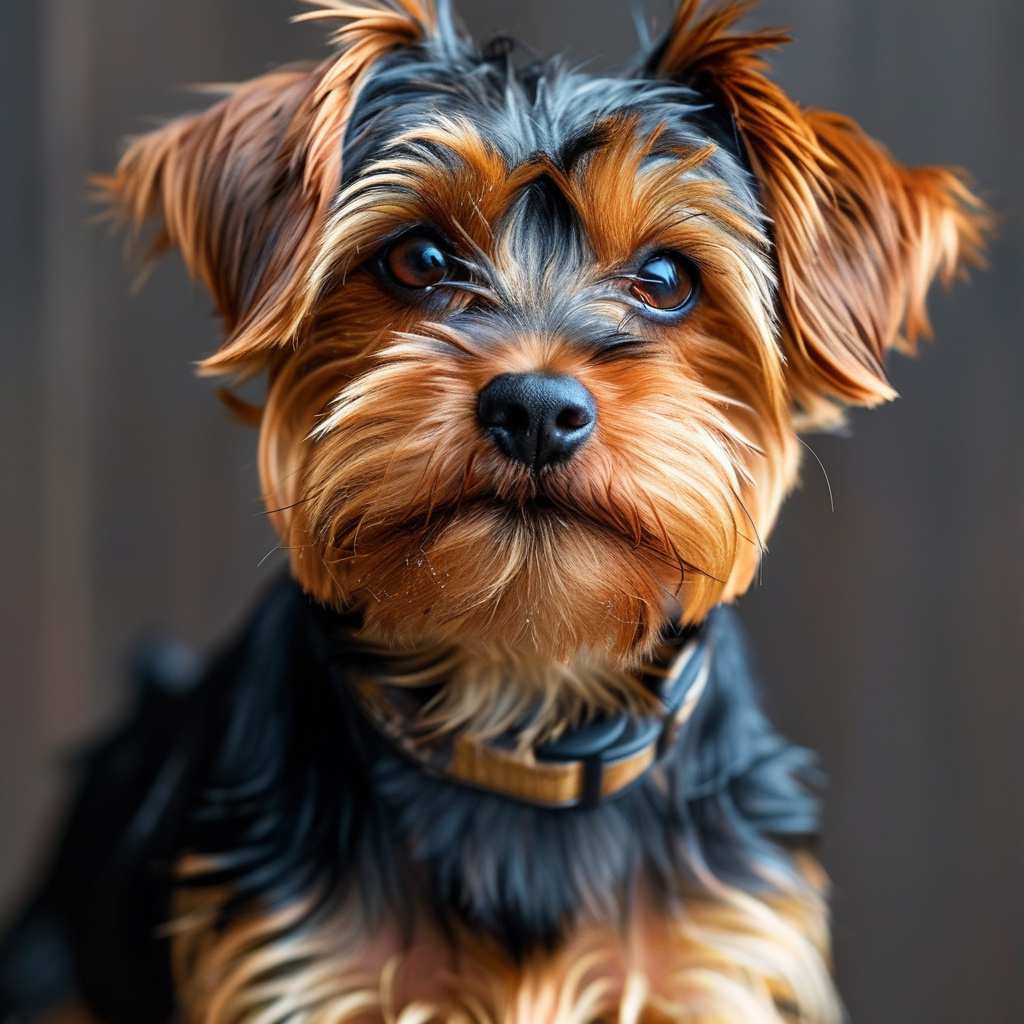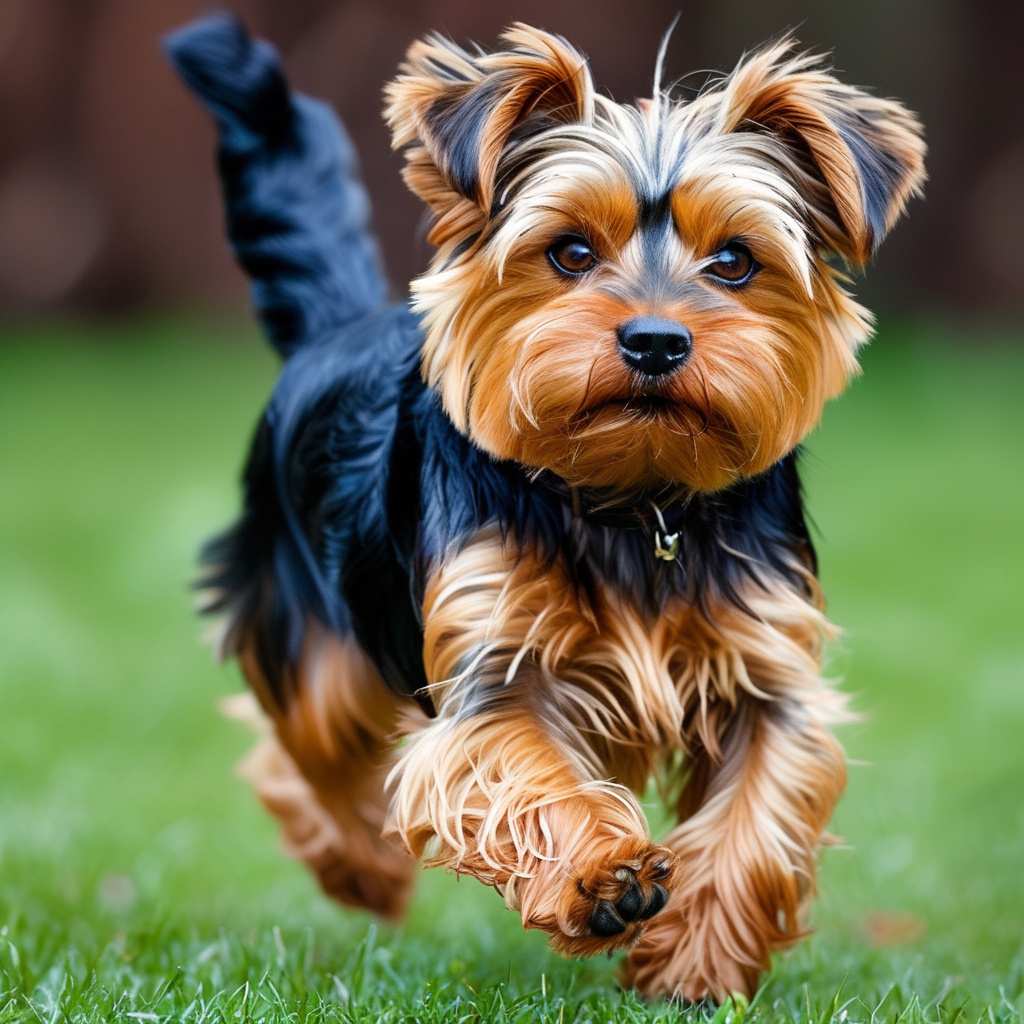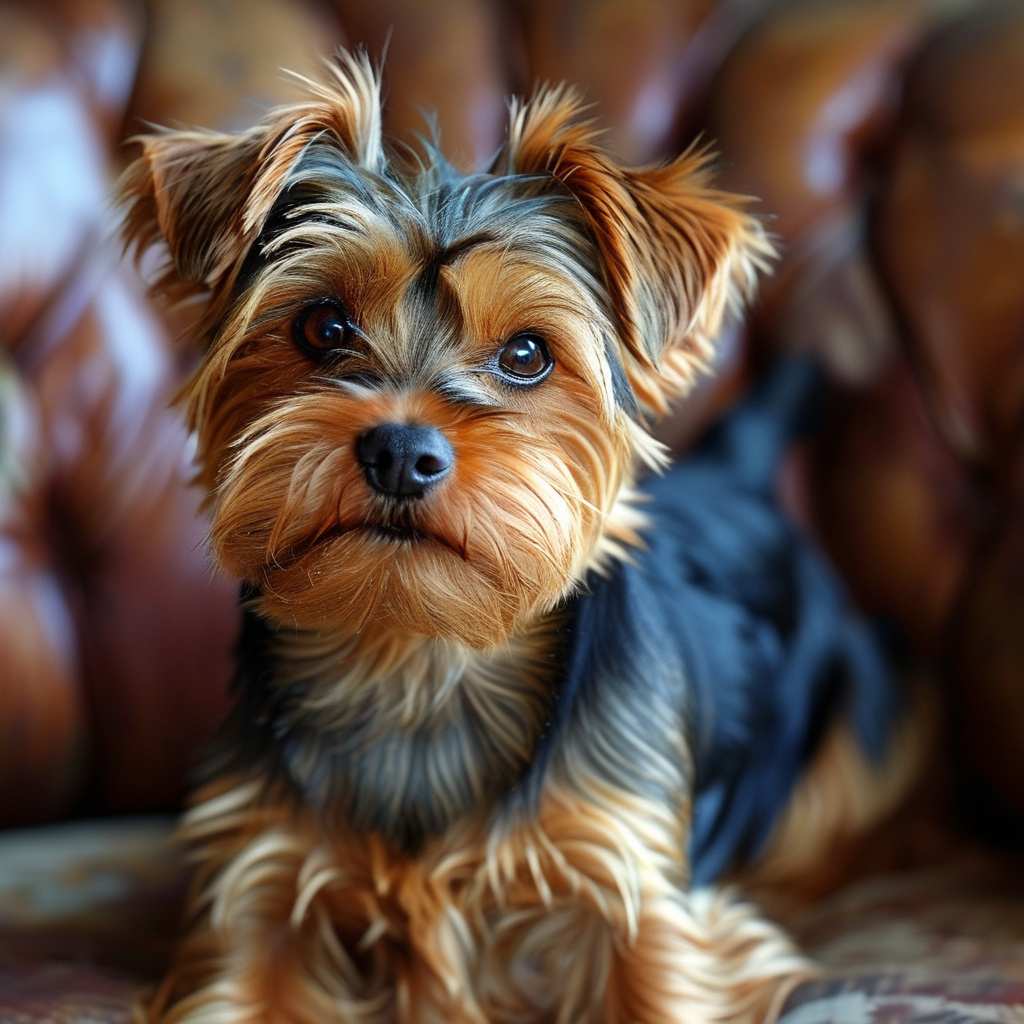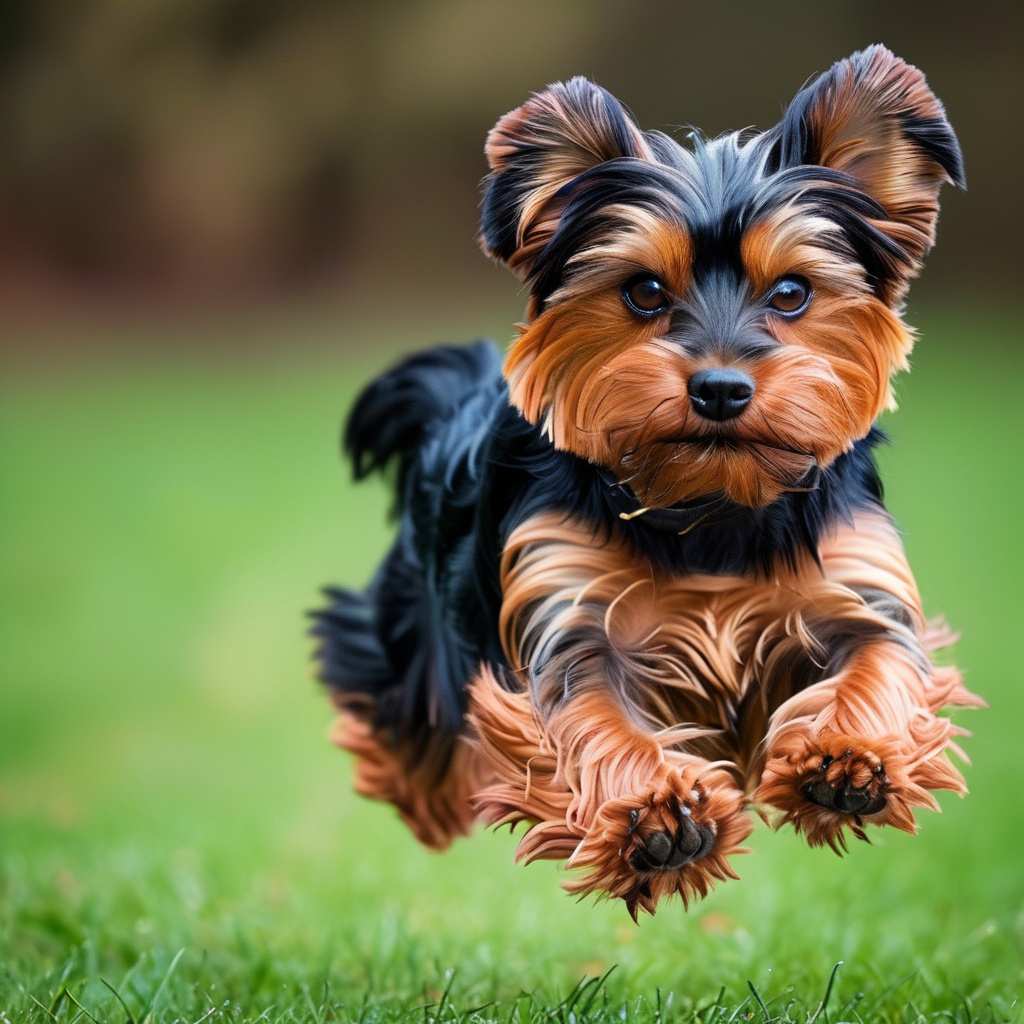 Introduction: The Yorkshire Terrier, affectionately known as the Yorkie, may be small in size, but it has a bold and lively spirit. Originally bred in 19th century Yorkshire, England, this tiny dog was once prized for its pest-hunting abilities. Today, Yorkies are beloved companion animals, recognized for their silky coats and lively personalities. Despite their petite stature, these dogs require proper grooming, consistent training, and plenty of attention. Though they can be independent and stubborn, Yorkies make excellent companions for those who appreciate their energetic and playful nature.
Introduction: The Yorkshire Terrier, affectionately known as the Yorkie, may be small in size, but it has a bold and lively spirit. Originally bred in 19th century Yorkshire, England, this tiny dog was once prized for its pest-hunting abilities. Today, Yorkies are beloved companion animals, recognized for their silky coats and lively personalities. Despite their petite stature, these dogs require proper grooming, consistent training, and plenty of attention. Though they can be independent and stubborn, Yorkies make excellent companions for those who appreciate their energetic and playful nature.
The Yorkshire Terrier may look small and harmless, but it’s an active dog that needs a lot of attention.
The breed first came about in the mid-19th century, and its job was to get rid of rats, mice, and other pests in homes. The Yorkshire Terrier hails from Yorkshire County, situated in the north of Great Britain. While they’re now seen as typical companion dogs, they were once thought to be better at hunting mice than cats!
Related Post: The Unique Charm of Thai Cats: A Return to the Original Siamese Look
 Yorkshire Terrier – Silhouette
Yorkshire Terrier – Silhouette
The FCI says that dogs of this breed can be up to 20 cm tall at the withers, no matter if they’re male or female. They shouldn’t weigh more than 3.2 kg.
The Yorkshire Terrier’s coat is blue with a dark steel-coloured hue. The fur on the chest is a deep fawn color and has a shiny look to it. The hairs are a bit lighter at the ends.
Grooming
The Yorkie’s coat is smooth, silky, shiny, and very similar to our hair structure. It’s important to make sure it has no undercoat, but that doesn’t mean we can ignore its care.
As a general rule, you should only bathe your Yorkie once a month, unless there’s a good reason, like when they get dirty from head to toe after a walk. Use a shampoo designed for long-haired dogs and apply a special conditioner or a product that already contains it after washing.
Related Post: Understanding Allergies in Dogs and Cats: Causes, Symptoms, and Treatment
You can easily find shampoos in pet shops that are designed with this breed in mind. After bathing, it’s really important to comb your dog’s fur, ideally with a soft and gentle brush.
If your dog gets wet during a walk or just comes out of the bath, it’s important to dry him thoroughly with a towel or hairdryer from a safe distance. This can help prevent colds.
 Yorkies, like other small breeds, tend to develop tartar, so it’s important to teach your puppy to be patient with the necessary hygienic treatments. It’s a good idea to introduce certain treatments while playing. This helps your dog get used to you touching his ears, checking his claws, or combing his fur.
Yorkies, like other small breeds, tend to develop tartar, so it’s important to teach your puppy to be patient with the necessary hygienic treatments. It’s a good idea to introduce certain treatments while playing. This helps your dog get used to you touching his ears, checking his claws, or combing his fur.
It’s also a good idea to take the time to create a hairstyle for York. This way, we can expose his eyes and prevent the hair from tangling. If you’re going to style your Yorkie’s hair, you’ll need special hairpins and hair bands.
Related Post: Should We Let Our Cat Outside? Understanding the Risks and Benefits for Urban Cats
Yorkie Health
1. Tracheal collapse
2. 3. Dislocation of the patella Axial-torsional dislocation is when the alignment of the neck is not normal. Cryptorchidism is when a dog’s testicles don’t descend into the scrotum. This is usually genetic.
5. Some dogs produce too much cerebrospinal fluid, which can lead to hydrocephalus. Peripheral gland inflammation
Despite suffering from numerous diseases, they are considered long-lived dogs, living more than 15 years. However, they require prevention and joint protection.
This breed is prone to colds because of its small size and lack of undercoat, so it’s a good idea to get it some warm clothes and a raincoat on colder days.
Yorkies love to have fun and enjoy the company. These dogs are great for kids, but it’s important to keep an eye on them, especially with younger children. It’s important to make sure children don’t pick up puppies or pull their hair. They should also play on the floor. He may be brave, but he’s still a tiny dog and can be easily harmed.
Related Post: Caring for Your Pregnant Cat: Essential Tips for a Healthy Pregnancy and Kittens
 York’s character is largely inherited from its hunting ancestors, who were brave and courageous but also independent and stubborn. That’s why this little dog isn’t afraid of anything bigger than itself (which can lead to some pretty tricky situations). On the other hand, we shouldn’t try to shelter it from all the dangers of the world because that can lead to nervousness, mistrust, and fear of the unknown. Let him explore the world around him, not just from our hands. Given this breed’s tendency to be stubborn, a standard training program probably isn’t the best approach. Yes, you can teach him a few commands, but these dogs are quite independent and may not really want to accept our vision.
York’s character is largely inherited from its hunting ancestors, who were brave and courageous but also independent and stubborn. That’s why this little dog isn’t afraid of anything bigger than itself (which can lead to some pretty tricky situations). On the other hand, we shouldn’t try to shelter it from all the dangers of the world because that can lead to nervousness, mistrust, and fear of the unknown. Let him explore the world around him, not just from our hands. Given this breed’s tendency to be stubborn, a standard training program probably isn’t the best approach. Yes, you can teach him a few commands, but these dogs are quite independent and may not really want to accept our vision.
If you want to teach York a few tricks, including grooming ones, I suggest doing it while playing. It’ll help the dog pick up new commands quickly. Don’t forget to keep him motivated – dog treats are a great way to do this.
Yorkshire Terriers are great for almost anyone, but remember that despite their cute looks, they’re still terriers and need consistent training and grooming.
Here are a few interesting facts about the Yorkshire Terrier:
Just a heads-up: They’re small and lightweight, so it’s probably best not to leave them unattended outside. There have been cases of large birds attacking and even kidnapping dogs!
They’re known for their therapeutic skills, which are used in hospitals and nursing homes. They can be loud and suspicious of strangers, which is inherited from their hunting ancestors.
Conclusion: Yorkshire Terriers are more than just cute lap dogs—they are spirited, intelligent, and fearless pets. With their hunting ancestry, these tiny dogs are active and require regular mental and physical stimulation. While they need special care for their distinctive coats and are prone to certain health conditions, their affectionate nature and long lifespan make them ideal companions for dedicated owners. Training a Yorkie requires patience and creativity, but the bond you’ll form with these charming dogs is well worth the effort. With proper care and attention, your Yorkie will thrive as a beloved member of the family.
FAQs:
- How often should I groom my Yorkshire Terrier? Yorkies need regular grooming due to their long, silky coats. You should bathe them once a month and brush their fur daily to prevent tangles and matting.
- Do Yorkshire Terriers get along well with children? Yes, Yorkies are great with children, but supervision is necessary, especially with younger kids. Their small size makes them fragile, and rough handling can lead to injury.
- What are common health issues in Yorkshire Terriers? Some common health issues include tracheal collapse, patellar dislocation, and hydrocephalus. Regular check-ups and preventive care are important for managing these conditions.
- Are Yorkshire Terriers easy to train? Yorkies can be stubborn and independent, so traditional training methods might not always work. Play-based learning and positive reinforcement are usually more effective for this breed.
- How much exercise does a Yorkshire Terrier need? Despite their small size, Yorkies are active dogs and need daily walks and playtime to stay healthy and happy.
- Why is my Yorkshire Terrier prone to colds? Yorkies lack an undercoat, which makes them more vulnerable to cold weather. It’s a good idea to dress them in warm clothes or a raincoat during colder months.
- Can I leave my Yorkshire Terrier outside unattended? No, due to their small size, Yorkies can be at risk of being attacked by larger animals, including birds of prey, so they should never be left alone outdoors.
References:
- American Kennel Club – Yorkshire Terrier
- Vetstreet – Yorkshire Terrier Breed Information
- PetMD – Yorkshire Terrier Health & Care
- Royal Canin – Yorkshire Terrier Breed Profile
- Hill’s Pet – Yorkshire Terrier Overview
- DogTime – Yorkshire Terrier Facts & Information
- The Spruce Pets – Yorkshire Terrier Guide